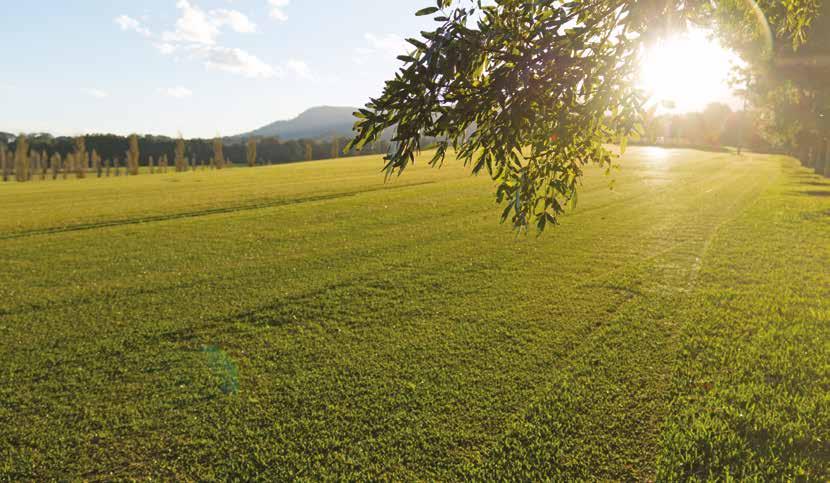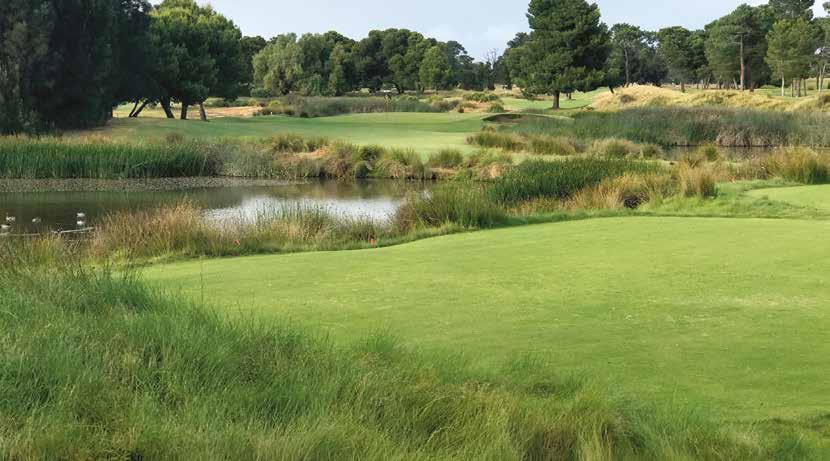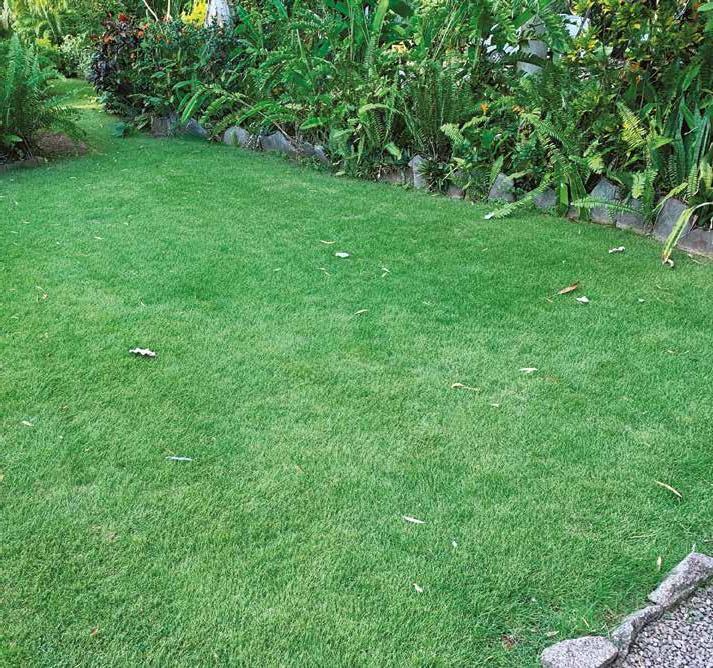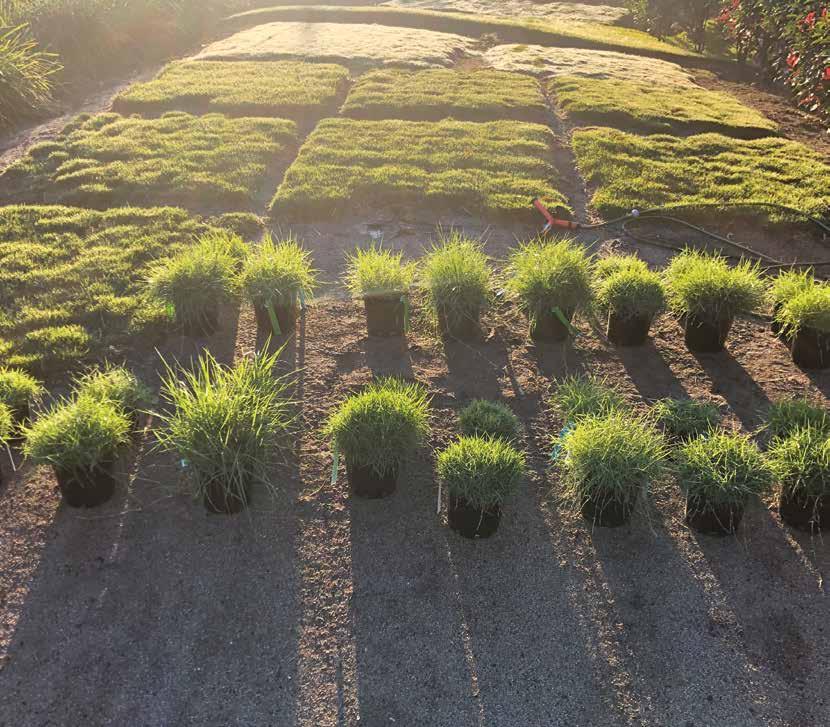
4 minute read
ORIGIN AND ROLE OF GRASSES
WITH TPI EXECUTIVE DIRECTOR CASEY REYNOLDS, PHD
Ever wonder what makes turfgrasses so different from other plants we find in the landscape? Just as importantly, ever wonder what makes them so similar? The answers to these questions are rooted in the origin of turfgrasses and where they fit in the plant kingdom. Understanding the origin of turfgrasses, and their relationships to other plants, provide insight into the role that turfgrasses play in our lives and why few other plants can perform a similar function.
Advertisement
There are over 300,00 species of vascular plants that form the dominant vegetation covering the Earth’s surface. Flowering plants, also known as angiosperms, are a diverse group of land plants that are classified into 416 families. Turfgrasses belong to the Poaceae family, which is the 5th largest family based on number of species and the third largest based on number of genera. They are placed here along with important cereal and grain crops such as wheat, oats, and corn as well as rice, sorghum, and sugar cane. In fact, 4 of the 5 top food crops in the world are grasses; sugar cane, corn, wheat, and rice. Worldwide, grasses cover approximately 24% of the world’s surface and account for nearly 50% of human’s caloric intake. While there are over 12,000 species of grasses in the Poaceae family, approximately 25 of them are used as turfgrasses.
Botanically speaking, turfgrasses are just as much flowering plants as roses, tulips, daffodils, and many trees, but they are often not thought of this way. They possess all of the same reproductive features (Figure 1) as other flowering plants including a pistil (stigma, style, ovary) and stamen (anther, filament). So why do so many people not think of them as flowering plants? First and foremost, turfgrasses do not produce showy, colorful flowers, which is what many people associate with the term flowers. Reproductively speaking, they do not need these features to attract pollinators because they are self-pollinated. In grasses, these structures are compacted into miniature flowers called florets that are small and inconspicuous, so they often go un-noticed. These florets are arranged into larger structures called inflorescences, sometimes referred to as seedheads, and there is a wide range of diversity in inflorescences among grasses (Figure 2). Figure 1
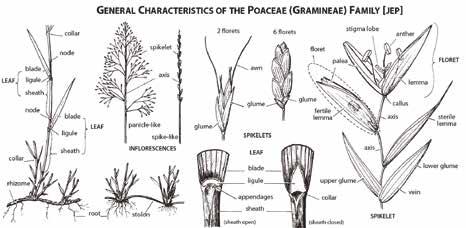

Figure 1
Buffalo Grass
The many benefits of perennial turfgrasses in urban centers have been well-documented with regard to capturing rainfall, reducing stormflow, reducing erosion, protecting watersheds from soil and nutrient runoff, and filtering pollutants in urban runoff due to their fibrous root system, high organic matter content, and diverse populations of soil micro-organisms. They are also one of the most effective species of plants for remediating disturbed topsoil. Home and building construction practices often remove, destroy, or significantly impact the health of these systems and the high carbon sequestration rates and fibrous root systems of perennial grasses are one of the most effective ways of returning soil structure to a more natural state. In fact, the United States Environmental Protection Agency along with many state agencies often list turfgrass sod in its recommendations for planting in areas that require topsoil remediation and/ or erosion control.
Soil remediation is largely a result of carbon sequestration as plants capture atmospheric CO 2 and deposit it below ground in roots, stems, decomposing leaf tissues, etc. There are an estimated 40 – 50 million acres of urban grasslands in the United States alone

which can sequester the annual emissions of up to 3.9 million cars. Recent research indicates that turfgrasses managed in urban settings are a net carbon sink for atmospheric CO 2 even after accounting for maintenance emissions from mowing, fertilization, etc. They increase labile soil carbon, total soil carbon, and soil organic matter. Data also suggests that this carbon sink can last for up to 30 to 40 years after establishment, with approximately 563 million tons of carbon sequestered in the top 8 inches of soil over 30 years.
Another potential benefit of urban turfgrasses with regard to energy is their ability to mitigate urban heat islands, reduce energy costs, and reduce carbon emissions from power plants. Research on the effects of urban heat islands in 2014 indicates that 57 out of 60 cities measured have seen temperature increases since the 1940’s. Plants, primarily trees and grasses, help mitigate this effect as a result of radiative shading and evapotranspiration. These cooling effects are not only capable of reducing temperatures in urban environments, but also significantly reducing energy use, cooling costs, and carbon emissions from power plants. On a national scale, mitigating urban heat islands could reduce energy cost by up to 20% and $10B per year. Other research has measured reductions in power plant emissions resulting from green spaces in Beijing, China and documented 60% reductions in net energy required for cooling, which equates to an annual reduction in CO 2 emissions of 243,000 tons.
The unique growth habit, flowering, and fibrous root system of perennial turfgrasses make them one of the most appropriate plants for use in urban landscapes, and few, if any, other plant species can provide comparable benefits or functions. However, their uniqueness also places them differently in the minds of citizens and policy makers who may not recognize the relationships that turfgrasses share with other plant species, nor their positive environmental impacts. If we can get decision-makers to start seeing turfgrasses as flowering plants that are both similar to, and different from, other plants found in the landscape then they may have a better appreciation of what this functional, durable, and beautiful plant provides in our daily lives.
For more information, visit: www.TurfgrassSod.org





